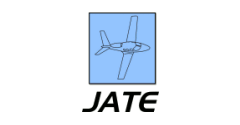Abstract
The purpose of this research was to explore experts’ memory capacity and the strategies experts use to achieve that capacity. Expert air traffic controllers were asked to recall traffic information during two radar and two nonradar scenarios. During radar scenarios, air traffic information was communicated aurally and displayed visually. During nonradar scenarios, air traffic information was communicated aurally only. Qualitative recall data assessment revealed an average capacity of five to eight aircraft in radar scenarios and three to six in nonradar scenarios, with two to three details recalled for most recalled aircraft. Recalled details and order of detail recall were highly consistent across experts, which suggest that aircraft details were organized and stored within larger conceptual knowledge structures. Recall patterns were additionally suggestive of frames containing slots designated for holding specific data types, structures described by Klein’s Data/Frame Model of Sensemaking. The extent of information recalled and its organization are additionally consistent with the use of long term working memory to extend working memory capacity; however, they do not rule out the use of working memory alone. Differences between radar and nonradar conditions were observed. Greater overall recall and greater and earlier recall of certain data-tag elements were observed in radar scenarios. In nonradar scenarios, greater and earlier recall of assigned actions were observed. Evaluation of experts’ descriptions of their recall processes suggested primarily visuospatial information encoding in both conditions and a lack of support for differences in the use of visuospatial or verbal encoding.
Recommended Citation
Triplett, Randall L.; Jaworski, Joseph M.; and Neville, Ph.D., Kelly J.
(2014)
"An Examination of Long-Term Working Memory Capacity,"
Journal of Aviation Technology and Engineering:
Vol. 3:
Iss.
2, Article 5.
Available at: https://doi.org/10.7771/2159-6670.1088



